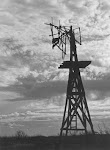Our Griffin roots were in Wales, then immigrating to Connecticut. Benoni Griffin, Jr., father of our Jonathan Griffin, lived in Simsbury, CT during the Revolution. His father, Benoni Sr. was a "Loyalist" during the American Revolution. Other Loyalists/Royalists moved out to Nova Scotia, but Benoni stayed where he was. Perhaps it was because his wealth was in land, cattle and sheep, things that could not be easily moved. Despite being loyal to the crown, he did furnish cattle for the starving American Army. George Washington appealed to Governor Trumbull for help to feed and clothe the men, and Washington’s comment was, ' Only Brother Trumbull could have made it happen, and it could only happen in Connecticut.' Trumbull, Washington, and Benoni Griffin were all Masons. There are certain appeals that MAY NOT be ignored by a Mason. However, nephew Stephen II, son of Benoni's dead brother was in the colonial Army too. Perhaps he had no choice but to feed when appealed to. We have no mention of Benoni Jr. during the Revolution. His son, Jonathan, was born in 1777. This family migrated to western Virginia.
William Sharp Sr., was the father of Rachel Sharp who married Jonathan Griffin. William is described in records from the American Daughters of the Revolution as serving as a private and fifer in Capt. Lewis Pelham's Company, Colonel Parker's Virginia regiment in 1778. Mr. Sharp was likely in Bath county VA prior to 1769 to be familiar with the Greenbrier property he was granted that year and he located his permanent homestead here about 1773. He saw service as a scout, spy and soldier against the Indians and the British. His own parents had been killed by Indians, as well as those of his wife, Mary Meeks.
Another ancestor, Joseph Rodgers, would have been about 20 at the time of the signing of the Declaration of Independence. He was the grandfather of our 2 gt grandmother, Elizabeth M. Rodgers Griffin. They hailed from Madison County VA, near the Rapidan River. Joseph probably knew or knew of the patriots who came from that area… Madison, Monroe, and Jefferson. Joseph’s son, James Rodgers, was married to Elizabeth Jackson, daughter of Drury Jackson, who was a Revolutionary Soldier, serving from 1776 to 1778. Part of his service took place at Charleston, SC, and he mustered out at Valley Forge. We have many documents concerning Drury’s service and pension.
Drury Jackson’s wife Elizabeth Bryan(t), was daughter of Jeremiah Bryan(t), a man of the same area of Virginia (Madison and Culpeper counties). His wealth was in land, which he claimed by “tomahawk claim”, making improvements and staking out much land to the west of Virginia. Then he did a lot of trading and selling. He was not mentioned as taking part in the Rev. War, but was probably expanding his own interests to the west.
On our Terry side of the family, our known ancestors were still in England till 1840’s . The McGills were in Ireland until early 1800s. The Frost family were in Massachusetts and Connecticut at the time of the Revolution. The DAR has record of our Samuel Frost, serving as a private in the 10th Regiment of Connecticut. He was part of campaigns in New York in 1776 under Brigadier General Walcott.
On our maternal branches of the family, I have recently found info that our 4 Gt Grandfather, Robert Cochran, was a Revolutionary Soldier from South Carolina. He was one of the first men to declare against the "Tories" in that state. Another maternal ancestor, Samuel Lowry, born 1757 in North Carolina, states in his pension application that he enlisted in 1775 (only 18 years of age) and served for 6 months. By 1776, he volunteered with a regiment fighting Indians, then joined "the company commanded by Samuel Young, and served as a Ranger, and was employed in resisting the scouting and plundering detachment from Lord Cornwallis' army which was then on its way to little York". After the war, he lived in South Carolina and became a medical doctor. (Coincidentally, my Gt Grandfather was named Samuel Young Griffin. I wonder if he was named for this Revolutionary Soldier.)
Our Easter ancestor, James Easter, originally from Virginia, served in Georgia as a Rev. Soldier in 1778. Muster rolls during that year listed him in Brunswick, and White Plaines, Georgia. He later brought his family to Georgia, perhaps on a land grant for his service. I guess he didn't feel a loyalty to the King who had granted his Virginia land, thirty years before.
Our Grant ancestor, Thomas Grant, was still an infant in Scotland, at the time of the Revolution. He possibly came to America as an orphan, indentured servant, ending up in Tennessee.
Fifth Great Grandfather, James Dillard III, was from Williamsburg, Virginia, a most interesting city during that time. On May 15, 1776, the Virginia Convention passed resolutions urging the Continental Congress to declare American independence from Britain. James is shown to have been a Captain in the 10th Virginia Regiment, retiring to Amherst, VA, after the war. His son John Dillard of Amherst was a Colonel, as declared by descendants who applied as members of the Sons of the American Revolution.
We continually discover more generations and try to chronicle ancestors' lives here in the United States and back into the colonies. We begin to relate to these ancestors as real people and wish we knew more about their lives.


